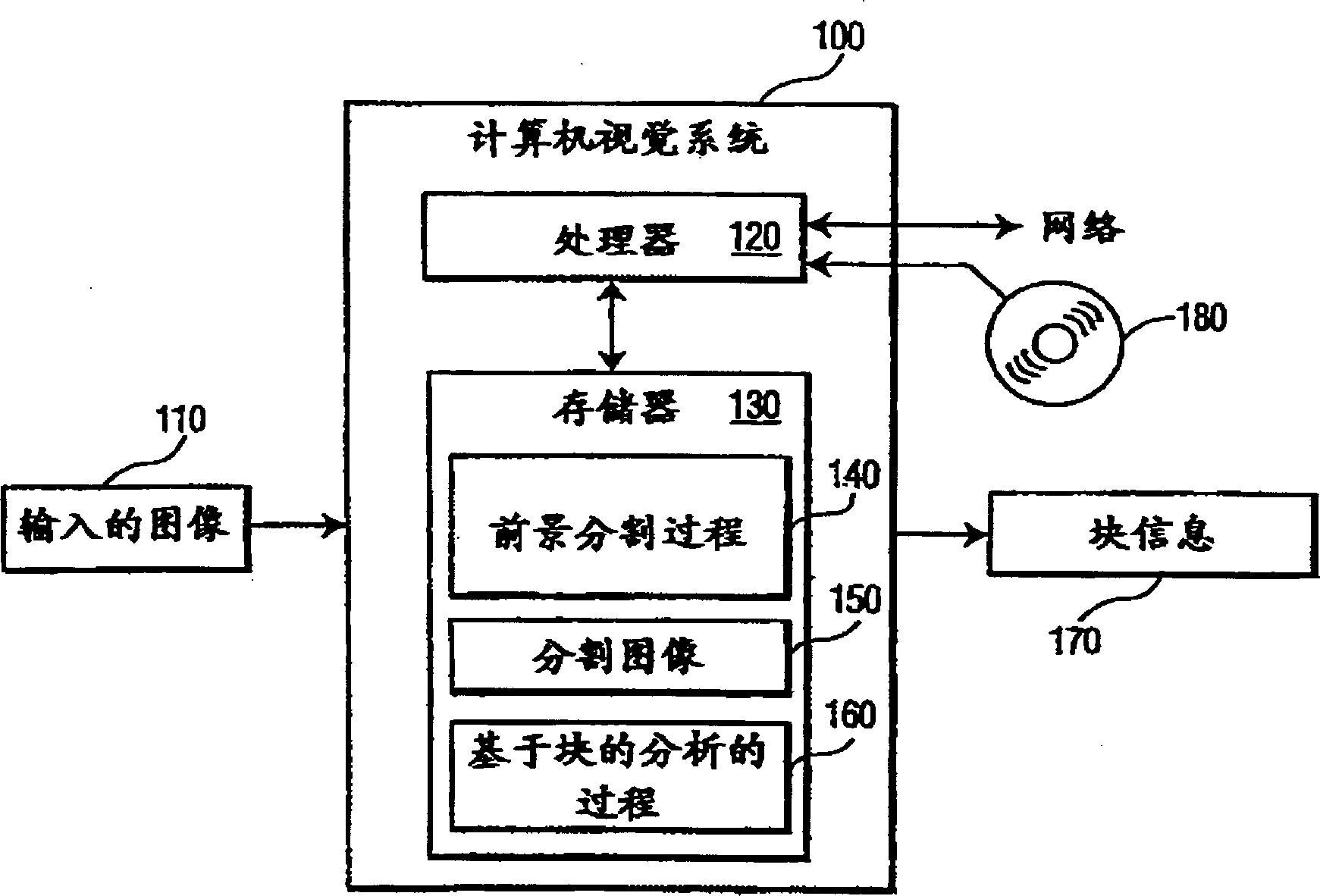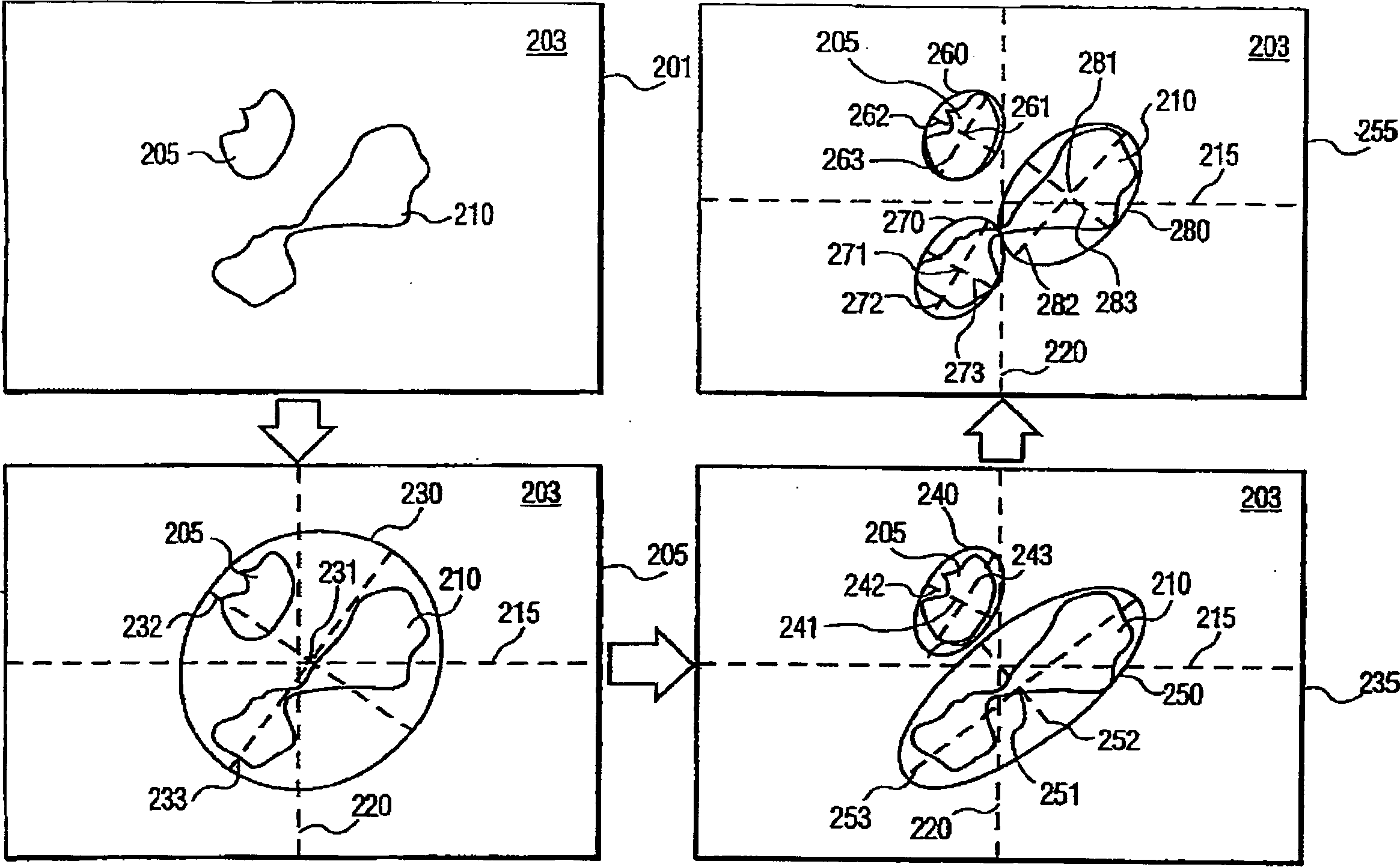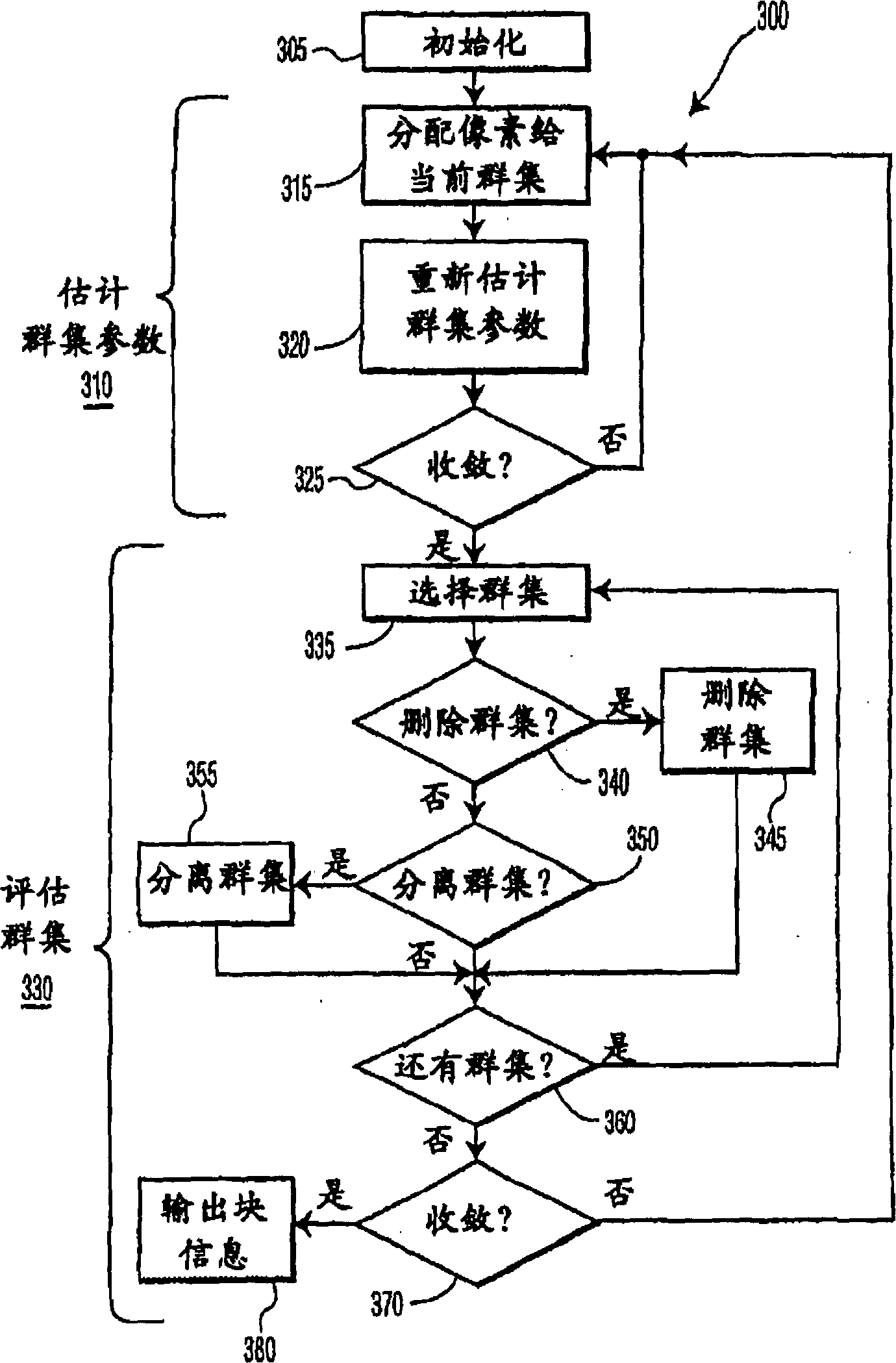Computer vision method and system for blob-based analysis using a probabilistic framework
A computerized, unassigned technology used in computer vision and analytics
- Summary
- Abstract
- Description
- Claims
- Application Information
AI Technical Summary
Problems solved by technology
Method used
Image
Examples
Embodiment Construction
[0016] The invention discloses a block-based analysis method and system. The method disclosed here uses a probabilistic framework and an iterative process to determine the number, location and size of blocks in an image. A block is a number of pixels that stand out in an image. In general, salientation is produced by background-foreground segmentation, referred to herein as "foreground segmentation." Groups are pixels grouped together, where a group is defined by a shape determined to fit a particular group of pixels. Here, the term "cluster" is used to refer to both the shape determined to fit a particular group of pixels and the pixels themselves. It should be noted that, as regards figure 2 As shown in more detail, one block can be assigned to multiple clusters, and multiple blocks can be assigned to one cluster.
[0017] The invention can also add, remove and delete clusters. Additionally, clusters can be tracked independently, and trace information can be output.
...
PUM
 Login to View More
Login to View More Abstract
Description
Claims
Application Information
 Login to View More
Login to View More - R&D
- Intellectual Property
- Life Sciences
- Materials
- Tech Scout
- Unparalleled Data Quality
- Higher Quality Content
- 60% Fewer Hallucinations
Browse by: Latest US Patents, China's latest patents, Technical Efficacy Thesaurus, Application Domain, Technology Topic, Popular Technical Reports.
© 2025 PatSnap. All rights reserved.Legal|Privacy policy|Modern Slavery Act Transparency Statement|Sitemap|About US| Contact US: help@patsnap.com



